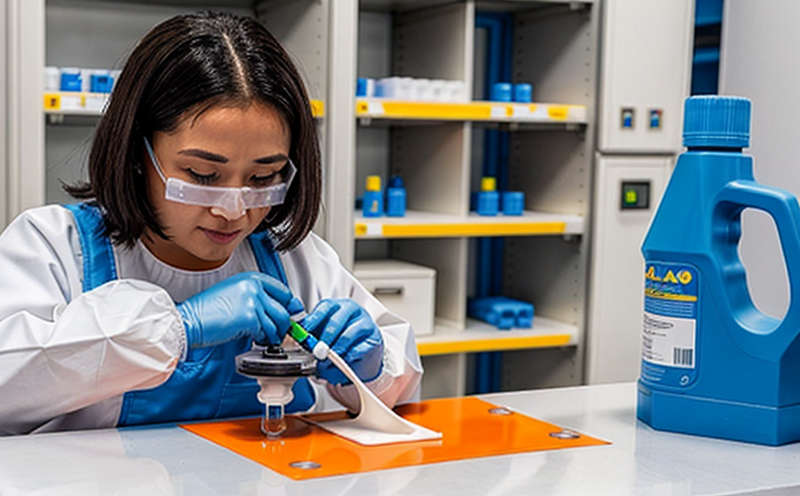ISO 11443 Rheological Properties of Adhesives with Nanoparticles
The ISO 11443 standard is crucial for the characterization and quality assurance of adhesives containing nanoparticles. This service ensures that the rheological properties—such as viscosity, shear thinning behavior, and elasticity—are accurately measured to meet stringent quality standards.
Understanding these properties is vital because nanoparticle additives can significantly influence the adhesive's performance. For instance, nanofillers like carbon nanotubes or graphene can enhance strength, improve adhesion, and reduce curing time. However, their presence also introduces variables that impact rheological behavior differently from traditional fillers.
The test protocol involves several steps to ensure accurate measurement:
- Specimen preparation: Ensuring the adhesive is homogenized with nanoparticles.
- Rheometer calibration: Ensuring the equipment accurately measures shear stress and strain rate.
- Data collection: Recording viscosity over a range of shear rates and temperatures.
The rheological properties tested under ISO 11443 are critical for quality control, especially in industries like automotive, construction, and electronics. For instance, in the automotive sector, understanding how nanoparticles affect adhesion strength can lead to safer, more durable vehicles.
| Property | Description | Importance |
|---|---|---|
| Viscosity | The resistance of the adhesive to flow when subjected to shear stress. | Directly affects application and curing behavior. |
| Shear Thinning Behavior | The decrease in viscosity as shear rate increases. | Impacts the ease of dispensing and spreading. |
| Elasticity | The ability to return to its original shape after deformation. | Critical for impact resistance in structural adhesives. |
These properties are measured across a range of conditions, including temperature and shear rate. The results provide insights into how the adhesive behaves under various real-world conditions, ensuring its suitability for intended applications.
The standard also covers the interpretation of these data in relation to the nanoparticle content and dispersion. For example, an increase in viscosity at low shear rates may indicate poor dispersion or agglomeration, which could lead to inconsistent adhesion performance.
ISO 11443 is particularly important for industries that rely on advanced materials like nanoparticles. By ensuring compliance with this standard, manufacturers can guarantee product quality and consistency across batches.
Applied Standards
The ISO 11443 standard is widely recognized in the industry for its rigorous approach to measuring rheological properties of adhesives containing nanoparticles. It is part of a suite of standards that ensure high-quality, reliable products.
In addition to ISO 11443, other relevant standards include:
- ASTM D2196: Standard Test Method for Rheological Properties of Adhesives
- EN 15800: Specification and Evaluation Procedures for Structural Adhesive Bonds
The application of these standards ensures that the testing process is consistent across different laboratories, leading to more accurate and reliable results.
Scope and Methodology
| Aspect | Description |
|---|---|
| Rheometer Type | The test uses a rotational rheometer to measure viscosity and shear thinning behavior. |
| Sample Preparation | The adhesive is mixed with nanoparticles, ensuring homogeneity before testing. |
| Temperature Control | The rheometer maintains a constant temperature throughout the test to ensure accurate readings. |
| Data Collection | Viscosity is measured at various shear rates and temperatures, providing comprehensive data on behavior. |
The methodology outlined in ISO 11443 ensures that the test results are accurate and can be relied upon for quality assurance. The use of a rotational rheometer allows for precise measurement of both viscous and elastic properties, which is essential for understanding how nanoparticles affect these characteristics.
Environmental and Sustainability Contributions
- Reduces waste by optimizing adhesive formulations to enhance performance with minimal raw material usage.
- Promotes the use of sustainable nanoparticles, such as those derived from natural sources.
- Enhances product lifecycle by ensuring durability and reliability, reducing the need for frequent replacements.
The ISO 11443 standard supports environmental sustainability through its rigorous testing protocols. By ensuring that adhesives with nanoparticles perform consistently, it helps reduce waste and promotes the use of more sustainable materials.





